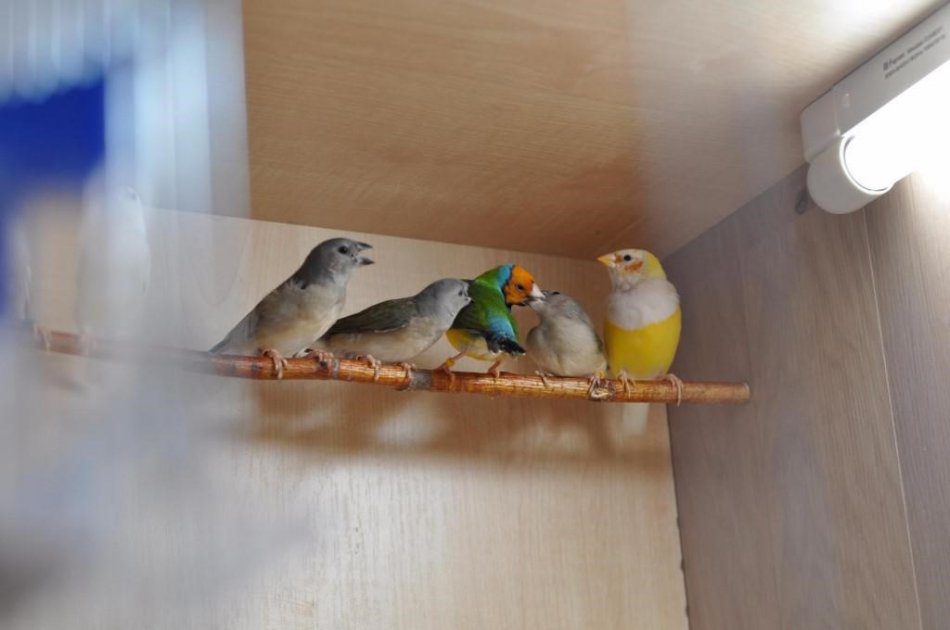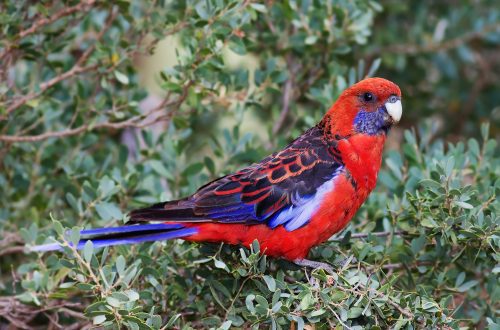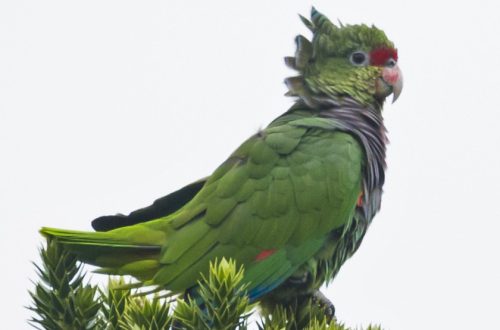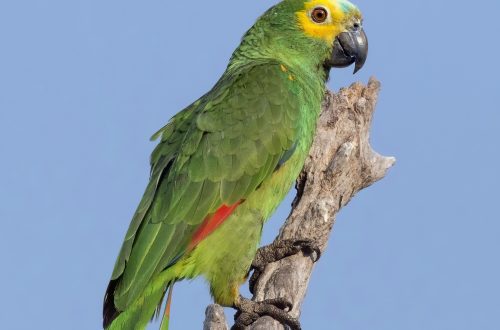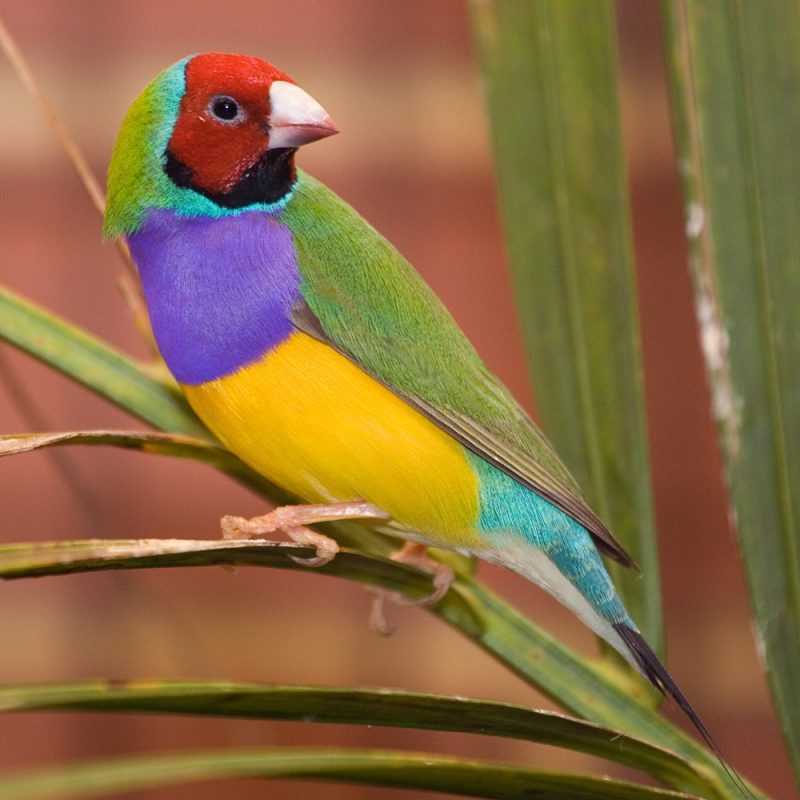
Gould’s finches (Chloebia gouldiae)
Order | Passerine |
family | Reel weavers |
Race | parrot finches |
View | Guldova amadina |
Gouldian finches can be called one of the most beautiful birds of the weaver family. They were named after the wife of the British ornithologist John Gould, because the wife constantly accompanied the scientist on expeditions, and together they traveled all over Australia. Gould’s finches are divided into 3 varieties: yellow-headed, red-headed and black-headed.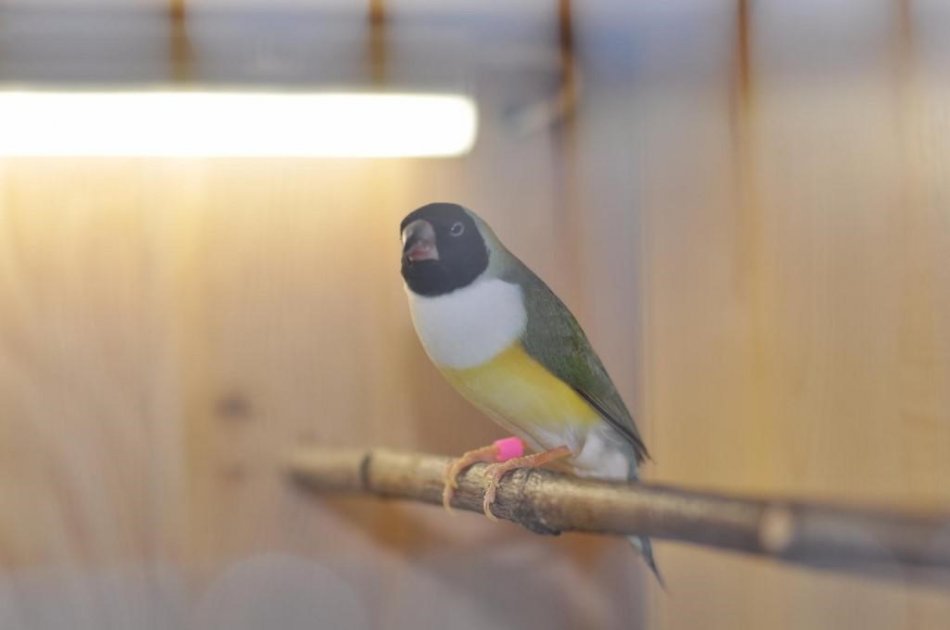

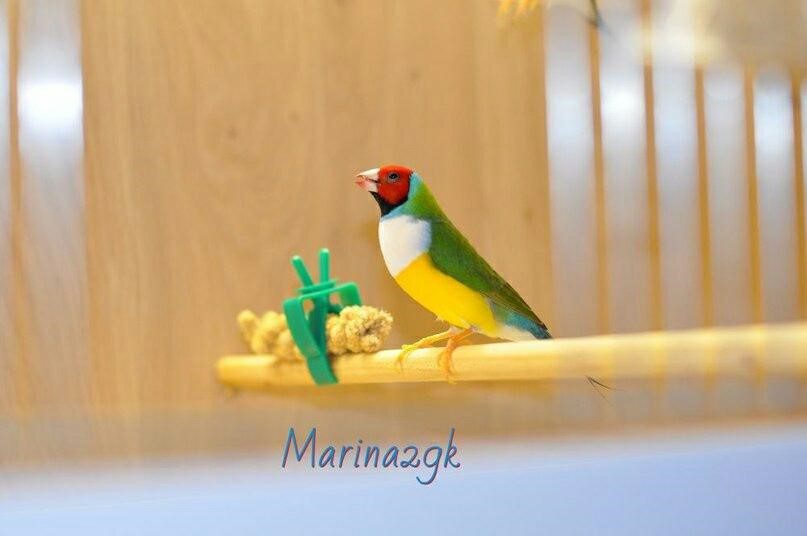



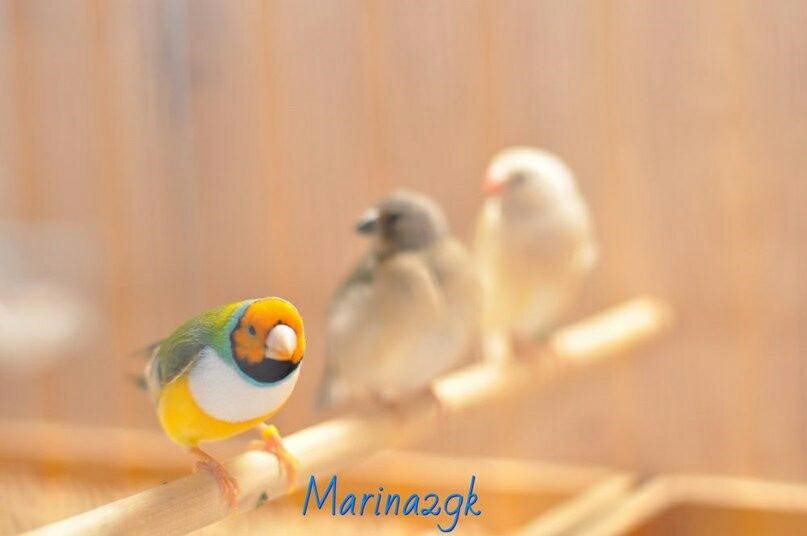



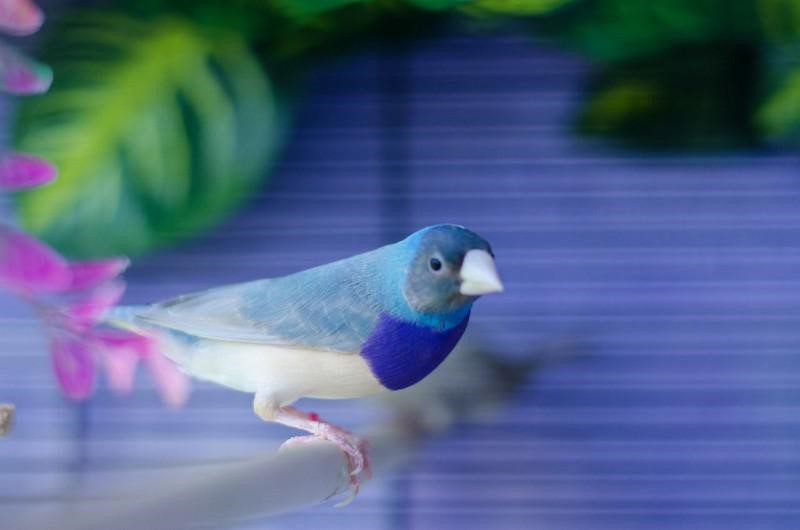



Yellow finches are also a mutation, but not so rare.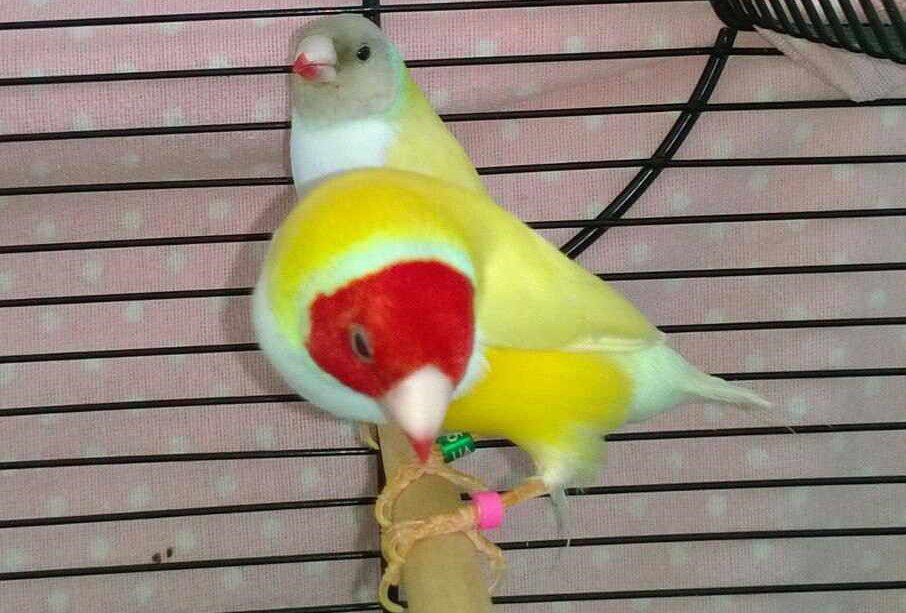



Contents
HABITAT AND LIFE IN NATURE
Gould Amadins usually choose tree hollows or abandoned nests of other birds, including budgerigars, for nesting. But sometimes their own nests are found, which the finches weave in tall grass or dense shrubs. But they are useless builders: the nests often have an unfinished vault, and in general they are not a masterpiece of bird architecture. Gouldian finches are tolerant of neighbors: if there is not enough space for nests, one hollow can give shelter to several pairs at the same time. Gouldian finches start nesting at the end of the rainy season. This is a time of wild growth of wild cereals and grass, so there is no shortage of food. There are usually 5-8 eggs in the nest, and both spouses incubate them in turn. When the chicks hatch, their parents get them live food (most often they are swarming in termites) and pinnate sorghum seeds.
KEEPING IN HOME
History of domestication
Red-headed and black-headed Gouldian finches came to Europe in 1887, yellow-headed a little later – in 1915. However, a large flow of birds was not observed: they came only from time to time and in small numbers. In 1963, the export of birds from Australia was generally banned by the government. Therefore, the bulk of these birds come from Japan.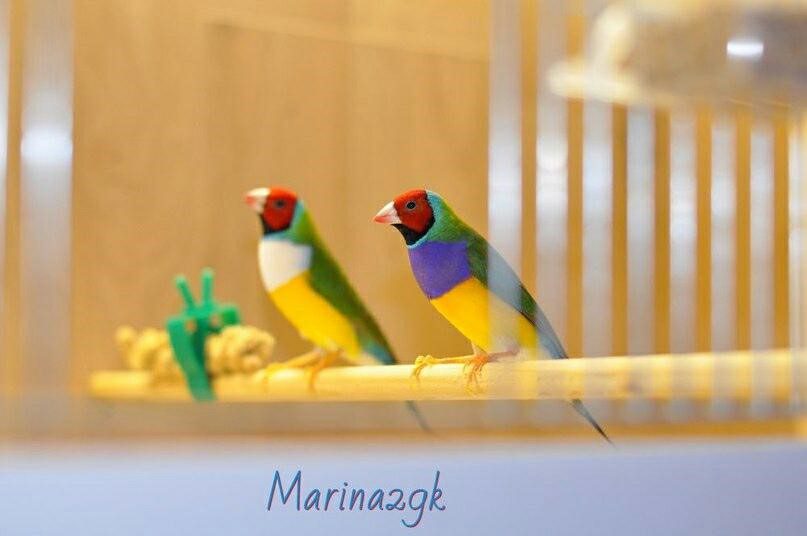



Care and maintenance
It is best if the Gouldian finches live in a closed aviary, a warm insulated outdoor aviary or bird room. A pair of finches can live in a cage, but the length of the “room” must be at least 80 cm. The cage must be rectangular. Remember that air temperature, light and relative humidity of the room are extremely important for these birds. The temperature should be maintained at +24 degrees, relative humidity should be 65 – 70%
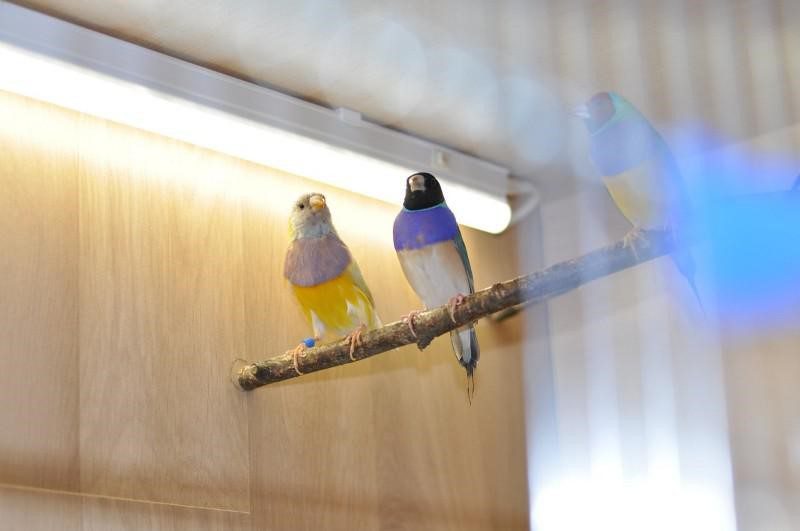



In the summer, expose the birds to the sun as often as possible. This is especially necessary for babies and molting feathered friends. Amadins are very fond of taking baths, so be sure to install a swimsuit in an aviary or cage.
Feeding
The best food for gouldian finches is a grain mix that includes canary seed, millet (black, yellow, red and white), paisa, mogar, chumiza and nougat. You can supplement the composition with seeds of Sudanese grass, it is better – in a semi-ripe form.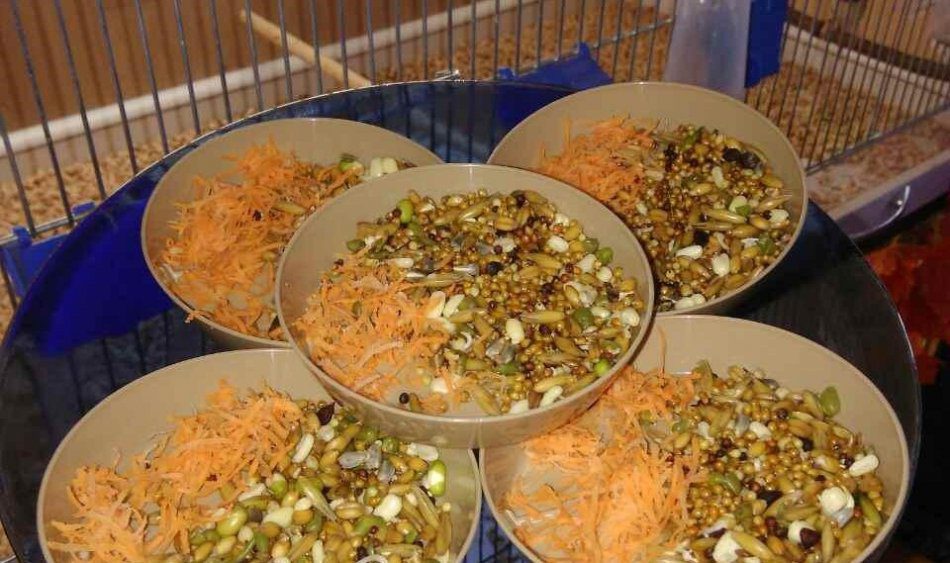



Gouldian finches are very fond of carrots. In season, pets can be given cucumbers and zucchini from their garden.
In order for the birds to feel good, it is necessary to add protein feed (especially to young animals). But getting used to egg feed and other types of animal food in finches is slow. Be sure to add mineral mixtures. An excellent option is sepia (cuttlefish shell). Eggshells are also suitable as a mineral feed. But before grinding it, be sure to boil it for 10 minutes and dry it, and then grind it in a mortar. An indispensable part of the diet is germinated seeds, because in nature, finches eat seeds in the stage of milky-wax ripeness. However, sprouting food for parrots is not recommended, since such a grain mixture contains seeds that are unsuitable for soaking. For example, flax seeds will secrete mucus.
Breeding
Gouldian finches are allowed to be bred when they are 1 year old and have completely molted. Younger females are unable to feed the chicks, and there may be problems with egg laying. Therefore, it is better to wait until the birds are fully grown. Hang a nesting box in the upper part of the aviary, the optimal size is 12x12x15 cm. If the finches live in a cage, then the nesting box is most often hung outside so as not to deprive the birds of their living space. mating that takes place inside the nest. The female lays 4 to 6 oblong eggs, and then both parents take turns incubating the chicks for 14 to 16 days. The night watch is usually carried by the female.
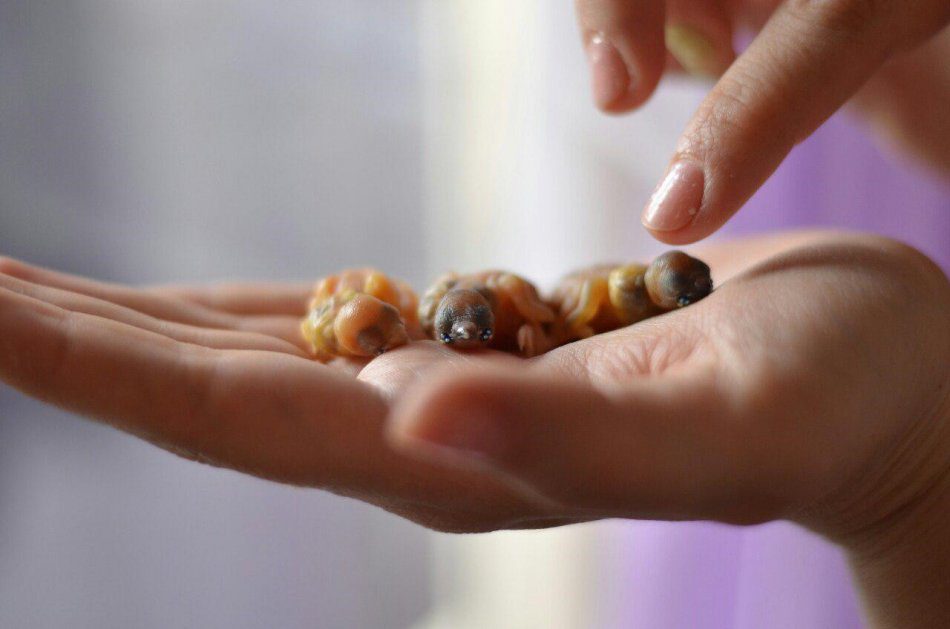



Chicks are born naked and blind. But the corners of the beaks are “adorned” with two azure-blue papillae, glowing in the dark and reflecting the slightest light. When the chicks are 10 days old, their skin darkens, and at 22-24 days they are already fully fledged and able to fly, so they free the nest. 2 more days later they are ready to peck on their own, but they gain full independence only after two weeks.